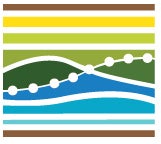The Atlantic Ocean off the Northeast U.S. coast is known for its productive fisheries, which may be threatened by human activities, short-term environmental variability, and long-term trends. To decipher the contributions of natural and anthropogenic forcings and manage this intricate ecosystem, the National Science Foundation (NSF) has announced the selection of this critical ocean region for a new Long Term Ecological Research (LTER) site led by Woods Hole Oceanographic Institution (WHOI) along with researchers at the University of Massachusetts, Wellesley College, and the Graduate School of Oceanography, University of Rhode Island.
LTER programs focus attention on specific sites representing major ecosystem types, and undertake long-term assessments of populations, communities, and the physical environment. A second new LTER coastal
The LTER science team will conduct four research cruises a year to observe the intensive cross-shelf study area using advanced automated equipment including imaging systems to assess phytoplankton and zooplankton populations and mass spectrometers to measure gases that trace production within the food web. They will also collect plankton for high-throughput DNA sequencing. These data will be integrated with physical and theoretical models as well as already existing data streams coming from the Martha’s Vinyard Coastal Observatory, Pioneer Array and fish stock surveys across the region by the National Oceanic and Atmospheric Administration’s Northeast Fisheries Science Center (NOAA-NMFSC).
The ultimate goal is to better understand interactions between physical and biological systems and the flow of energy through the ecosystem from phytoplankton to fish, illuminating how the food web is structured and shifts in response to environmental changes.
The scientific efforts are complemented by intense data management and science outreach, including opportunities to participated in multifaceted education programs for graduate, undergraduate, and younger students, teachers and the public.

